It’s our great hope that each of you will fully appreciate and enjoy this article about these 7 Outstanding Orb Weavers we present here. We certainly enjoyed creating it for you. It’s our further hope that it leaves with an increased awareness of their place in the world.
Of course, the few species listed herein represent only a tiny percentage of the known number of orb weaver varieties. To date, science recognizes over 4,000 such species. We do feel, however, that these few serve as good examples of their truly impressive Family.
Giant Golden Orb Weaver
Giant Golden Orb Weaver Facts
- Leading off this article about 7 Outstanding Orb Weavers comes the fabulous arachnid understandably known as the Giant Golden Orb Weaver.
- This product of Nature and evolution most frequently goes by the descriptive common name that it does for good reasons. It also has another, very similar name, though. That’s the term northern golden orb weaver. But, whatever one calls it, it’s impressive.
- The term used also varies across its native range. Among scientific professionals, however, it’s typically referred to by its formal title. Most such specialists know this variety of golden orb weaver spider by the technical moniker of Nephila pilipes.
- Johann Christian Fabricius made the first acknowledgement of the arachnid as a separate and distinct species. This scientifically noteworthy deed the student of Carl Linnaeus accomplished in 1793. Since then, nine subspecies have been recognized.
- For the moment, this wonder of the invertebrate world further appears to be in a much better position than many species around the world. That’s due to the fact that it seems to be maintaining a population base that’s equally sizeable, sufficient, and stable.
- That fortunate situation further seems to hold true across the entirety of its range. Due to this, the IUCN presently lists the Giant Golden Orb Weaver as Least Concern. That status is reflected on the organization’s published Red List of Threatened Species.
- The intriguing arachnid nevertheless faces some factors that could eventually pose a threat to it. Habitat loss and degradation, largely due to human activities, rank among these. Its greatest potential threat, however, likely comes from climate change.
Giant Golden Orb Weaver Physical Description
The remarkable Giant Golden Orb Weaver easily impresses and intrigues those who encounter it. Although the Arthropod does so for several reasons, its sheer size clearly ranks high among them. That’s because it’s one of the largest of all of its close relatives.
In keeping with that, it also manifests a strong degree of the physiological trait of sexual dimorphism, like many arachnids. In its case, this characteristic primarily manifests itself in terms of sheer size. More precisely, the female of the species literally dwarfs the male!
Females of the species typically reach a body length equaling roughly 2 in (5 cm). That body also develops as highly elongated. Along its length, the body varies in width from 0.4 – 0.6 in (1.0 – 1.5 cm). Her legspan, however, typically measures a relatively enormous 6 in (15 cm)!
Males, meanwhile, remain quite tiny in comparison. That holds true given the fact that few individuals of that gender attain a body length beyond 0.25 in (0.64 cm). Its legspan also remains equally small in comparison, rarely exceeding 2 in (5 cm) in this specific aspect.
Otherwise, both genders of the Giant Golden Orb Weaver vary little in general outward appearance. The main exception to this is the coloring of the legs. Those of the female present a combination of yellow and black. Those of the male, though, show a light brown.
In terms of other color patterns, individuals vary significantly, with no regard to gender. The shades presented run from violet, to silver-gray, to various shades of brown. Males also develop small hairs on their legs, while most of the adult females lack these entirely.
- Kingdom: Animlia
- Phylum: Arthropoda
- Class: Arachnida
- Order: Araneae
- Family: Araneidae
- Genus: Nephila
- Species: N. pilipes
Giant Golden Orb Weaver Distribution, Habitat, and Ecology
Luckily for the Arthropod, the Giant Golden Orb Weaver evolved as native a comparatively broad swathe of the globe. That zone of habitation also happens to be a general region shared by numerous other amazing species. It’s unknown if it ever appeared anywhere else.
That statement holds true partly because it evolved in a region that includes parts of the continent of Asia. There, it makes its home in the east and southeast portions of the area. Yet it also lives in other parts of the general region known as Oceania, including in Australia.
Wherever it makes its home, though, the remarkable arachnid displays strong preferences regarding its exact habitat. As a general principle, it only resides in areas or relatively high moisture, for one. Yet it also strongly prefers that area to also have little or no direct sunlight.
In parts of its range, this frequently includes regions of rainforest. Most often, in all parts of its habitation range, it most commonly lives comparatively near the coast. That’s due to the greater level of overall precipitation. It also appears in parks and even private yards.
The magnificent Giant Golden Orb Weaver generally constructs its large webs in trees or larger bushes. It also creates these structures against buildings or other large features of the terrain. In most of these locations, though, it requires relatively close surface water.
It also evolved as highly choosy in its diet, unlike most spiders. In fact, it only feeds on a few species. It even goes so far as to remove some insects from its web! The spider avoids insects that exude certain unpleasant compounds. It mainly feeds on somewhat larger prey.
Scorpion-Tailed Spider
Scorpion-Tailed Spider Facts
- Next up in this compendium of 7 Outstanding Orb Weavers we give you the distinctive invertebrate named the Scorpion-Tailed Spider.
- The attention-grabbing term for this arachnid clearly fits this amazing arthropod. Although riveting, it’s not the only name applied to it, though. That’s because it’s also known by such terms as scorpion orb weaver and simply the tailed spider.
- Its official scientific name, meanwhile, remains far more difficult to pronounce. That’s because arachnologists know it as the Arachnua higginsi. Regardless of which term one applies to it though, it’s an incredible species, and remarkably evolved.
- The highly respected German entomologist and arachnologist, Ludwig Carl Christian Koch, made the first official notice of it. That original recognition of the arachnid as a separate and distinct species took place due to his efforts in the year 1872.
- Fortunately, the amazing Scorpion-Tailed Spider appears to be maintaining a population base that’s both sufficient and stable. This further seems to hold true throughout the entirety of its range. The IUCN, therefore, has no listing for the animal.
- This fascinating species nevertheless faces the same potential threats that most, if not all, living things on earth now do. These come in many forms, of course. Chief among these would be habitat loss and the ongoing effects of climate change.
Scorpion-Tailed Spider Physical Description
The magnificent Scorpion-Tailed Spider actually deserves note for two different physical reasons. The first, somewhat surprisingly, involves its simple physical size. That’s due to the fact that this amazing arachnid evolved an impressive degree of sexual dimorphism.
More specifically, in its particular case, the females develop as significantly larger in terms of body size. The length of the body of the female averages about 0.63 in (16 mm). That of the tiny male, however, only reaches an average length of roughly 0.08 in (2 mm).
The astonishing tail, though, remains its most distinctive physical attribute. This also represents another form of gender-based physical difference. That’s because only the females develop this body part. This appendage increases in size with each molting.
Though different in terms of size and the unique appendage, the two genders display identical patterns of color. This varies extensively among adult individuals, however. Typically, though, this ranges from as light as beige to as dark as shades of brown and black.
Another color pattern further appears among a small percentage of adults. That’s the presence of a bright red or yellow patch on the abdomen. Juveniles of the impressive Scorpion-Tailed Spider, however, frequently display even brighter colors than adults.
- Kingdom: Animalia
- Phylum: Arthropoda
- Class: Arachnida
- Order: Araneae
- Family: Araneidae
- Genus: Arachnura
- Species: A. higginsi
Scorpion-Tailed Spider Distribution, Habitat, and Ecology
The fascinating arachnid known as the Scorpion-Tailed Spider has a very specific habitat range. That’s because it evolved as native to only a limited portion of the globe. It’s also a region well known for the astounding diversity of life, including spiders.
This holds true due to the fact that it evolved as endemic to a portion of the continent of Australia. Even within that country, though, its range remains restricted. In point of fact, it’s only known to live in the southern continental sections, and Tasmania.
On the other hand, within that area it appears to be widespread. That’s due to the fact that it displays a remarkable versatility in terms of its habitat preferences. The natural marvel seems comfortable in virtually any form of bushland, even gardens on occasion.
The web of this particular arachnid typically appears built close to the ground. Surprisingly, this appears in either a vertical, angled, or even horizontal position. During the day, the spider sits patiently in or near the center of the web. Here, it patiently awaits its prey.
Most commonly, the prey of the Scorpion-Tailed Spider consists of small insects, like most of its kin. The tail, though distinctive, remains harmless, and plays no role in hunting. It does, however, move it in a manner similar to a scorpion, as a deterrent to predators.
Black Widow
Black Widow Facts
- Appearing in the third spot in this listing of 7 Outstanding Orb Weavers comes the world renowned arachnid known simply as the Black Widow.
- Perhaps most notably for most individuals, the amazing invertebrate represents a very dangerous variety of spider. Placed in the Latrodectus genus, many of these reclusive arachnids are also known to some people simply as widow spiders.
- Experts also currently list 32 known species in this genus, spread throughout much of the world. The three species endemic to North America remain the most commonly known, though. Each of these arachnids shares many physical traits.
- The common name for these dangerous invertebrates derives from the high prevalence of sexual cannibalism in the Black Widow. After mating the larger female commonly, though not always, kills and then feeds on the smaller male.
- The toxin of its bite further remains considered by most experts to be especially dangerous. The invertebrate earns this distinction due to the presence of the neurotoxin latrotoxin. This represents an especially dangerous type of venom.
- Only the bite of the female typically presents any danger to humans, however. That’s because she generally has far larger venom glands than her much smaller male counterpart. Despite its reputation, though, few bites actually result in fatalities.
- Presently, the majority of species grouped under this common name continue to have stable populations. The IUCN, therefore, does not list them on its Red List. These amazing spiders nevertheless face the same threat from climate change as we all do.
Black Widow Physical Description
Not surprisingly, the various species of Black Widow attain similar physical sizes. However, this remarkable arachnid typically displays a significant amount of sexual dimorphism. This physiological characteristic manifests itself in terms of both color patterns and size.
That’s partly because the female attains an average length of about 1.4 in (3.5 cm), whereas the male stays much smaller. He most commonly only reaches an average length of roughly 0.7 in (1.75 cm). The males also do not display the characteristic red hourglass.
Color patterns also vary relatively significantly between the various forms. All members of this genus, however, appear predominantly black in color. The females of each species, though, all display a very prominent red hourglass shape on their abdomens.
- Kingdom: Animalia
- Phylum: Arthropoda
- Class: Arachnida
- Order: Araneae
- Family: Theridiidae
- Genus: Latrodectus
Black Widow Distribution, Habitat, and Ecology
The three species of Black Widow that evolved as native to North America remain the best known of the varieties. The incredible genus also thrives in many other areas of the world, though. In fact, the various species inhabit every continent of the world, except Antarctica.
Quite understandably, given its nearly global distribution, habitat types vary widely. Nevertheless, members of the genus most commonly live in temperate and tropical climates. A few of them, though, even live in extremely arid regions of the world.
Individuals usually build their webs in locations such as around rubble, small trees and bushes, in the wild. But, when found inside of human habitations, webs usually appear in isolated areas, such as attics and garages. This fortunately makes encounters rare.
When a human gets bitten, the venom of a Black Widow commonly causes a condition known as latrodectism. Experiences include profuse sweating, vomiting, muscle rigidity, and extreme pain. These symptoms typically persist for 3-6 days, but can last longer.
All currently known members of this genus hunt as ambush predators, laying in wait in the web. It feeds opportunistically, making a meal of any small creature caught in its web. Its diet, however, typically consists of mosquitoes, grasshoppers, beetles, and such.
Brown Recluse Spider
Brown Recluse Spider Facts
- Now we present the next creature appearing in this article about 7 Outstanding Orb Weavers, the small yet impressive Brown Recluse Spider.
- This seemingly harmless arachnid remains best known by this particular name. The surprising arthropod also goes by several other common names, though. These terms include the brown fiddler, the violin spider, and the fiddleback spider.
- Among professional researchers, however, it’s generally referred to by the difficult to pronounce scientific name of the Loxosceles reclusa. But, which name one uses to refer to it fails to alter one simple fact. Its relatively benign appearance is quite misleading.
- In point of fact, this particular arachnid typically makes most top 10 lists of the most dangerous spiders in the world. Also impressive remains another fact. Such a great potential threat actually comes packaged in a comparatively small body.
- Fortunately, though, encounters with humans that end in bites rarely occur. This primarily occurs due to a combination of its reclusive nature, and its choice of preferred habitat. Yet, when bites are inflicted, these can be extremely serious in nature.
- For the moment, the IUCN does not presently have a classification for the Brown Recluse Spider. That’s due to the combination of adequate range and sufficient numbers. Any ranking would appear on the organization’s published Red List.
- It must, however, be considered to be at some potential risk, like many species today. Also like other creatures, it currently faces many threats. Further sharing mutual perils, its greatest dangers most likely consist of habitat loss and the effects of climate change.
Brown Recluse Spider Physical Description
While the magnificent Brown Recluse Spider impresses, it does not do so due to sheer size. Although certainly not the smallest known spider, by any means, it’s nevertheless tinier than most dangerous ones. Plus, it does display sexual dimorphism, but not in terms of size.
Somewhat oddly, adults vary significantly in size. As a result, leg spans average from 0.24 – 0.79 in (6 – 20 mm). Exceptional specimens do sometimes occur, however. That being said, unconfirmed reports of individual specimens approaching 1 in (2.5 cm) in span exist.
The color pattern of both genders also typically consists of a light or medium brown over the entire body. Some Brown Recluse Spider specimens display an off white, dark brown, or grayish color. Many display a black line on the side, and a violin-shaped marking.
The gender-based difference displays in the pedipalps. These leg-like structures are larger on the end among males. In appearance, though, its most notable feature remains its eyes. This spider has six eyes, instead of eight, arranged in pairs. Few spiders share this trait.
- Kingdom: Animalia
- Phylum: Arthropoda
- Class: Arachnida
- Order: Araneae
- Family: Sicariidae
- Genus: Loxosceles
- Species: L. reclusa
Brown Recluse Spider Distribution, Habitat, and Ecology
The often overlooked Brown Recluse Spider also holds yet another notable status. That’s the fact that this shy but potentially deadly spider only appears in a restricted portion of the world. In fact, that natural range consists of portions of the United States, in North America.
More precisely, its official native range covers much of the southeastern, southwestern, and parts of the mid-west regions. This area includes all or portions of 16 different states. But, perhaps due to the activities of humans, reports of sightings in other areas exist.
Within this zone, its natural habitat consists of such places as fallen logs. It further prefers dark, dry, undisturbed locations. It has also adapted to the presence of humans in its range. As a result, it frequently inhabits wood piles, garages, basements, and storage sheds.
The Brown Recluse Spider builds an irregular-shaped web. This also generally holds a small shelter. This particular variety of web weaver also differs from its brethren its behavioral patterns. It leaves its lair at night to hunt, with females tending to remain in closer proximity.
Given that it actively hunts and stalks its prey, it evolved to move quickly. Such prey usually includes creatures such as various small insects and even other small spiders. It’s also extremely resilient. In point of fact, individuals can survive for months between feedings.
Carolina Wolf Spider
Carolina Wolf Spider Facts
- The fifth marvel of Nature appearing in this compilation of 7 Outstanding Orb Weavers bears the intimidating name of the Carolina Wolf Spider.
- Firstly, for someone with arachnophobia, the sheer size and appearance of this specific spider can easily be the source of nightmares. This holds true because the amazing arachnid forms the largest of the known wolf spiders in its habitat range.
- Yet, despite its comparatively intimidating appearance, this arachnid remains relatively harmless to humans. But, its large size often causes a bite to be painful to the victim due to the sheer size of the fangs. That fact leads to misconceptions about its toxicity.
- This species also does not usually react aggressively. In point of fact, individuals typically flee from any creature larger than itself. Though daunting in appearance, the Carolina Wolf Spider usually only bites if it feels threatened and cannot flee.
- Though rare in occurrence, envenomings do sometimes occur. Those who experience this typically compare the sensation to the sting of a bee or wasp. In fact, the venom of this arachnid actually remains mostly harmless to any large mammal.
- For the moment, its population appears to be large in number, and relatively stable. The IUCN, therefore, currently has no listing for it. It nevertheless could be considered to be at some risk due to the ongoing effects of climate change, like other species.
Carolina Wolf Spider Physical Description
Perhaps most notably, exceptional specimens of the Carolina Wolf Spider attain a leg span of as much as 4 in (10 cm). A slight degree of sexual dimorphism also presents itself in this species. That occurs because females of the species average about 25% larger than the males.
The remarkable species further most commonly displays a highly useful physical appearance. Individuals generally appear a light gray or light brown in color, with darker patches. Given its environment, this pattern provides the arthropod with natural camouflage.
The body also typically has a covering of small hairs, giving the species a furry appearance. The precise reason for this particular evolutionary adaptation, however, presently remains undetermined. The overall effect creates a daunting visage to those who encounter it.
The eight compound eyes of the Carolina Wolf Spider grow relatively large in comparison to body size. In fact, its eyes develop as so highly reflective that people often hunt it at night. A simple flashlight used to spot the creature clearly highlights these orbs.
- Kingdom: Animalia
- Phylum: Arthropoda
- Class: Arachnida
- Order: Araneae
- Family: Lycosidae
- Genus: Hogna
- Species: H. carolensis
Carolina Wolf Spider Distribution, Habitat, and Ecology
The full endemic range of the impressive Carolina Wolf Spider actually covers a relatively large region. That’s despite the common name for it. In point of fact, that range includes Ontario, Canada, and much of the continental United States, including North Carolina.
The species proves itself to be highly versatile and adaptable. Individuals typically reside in shallow burrows. It nevertheless adapts well to different climates. Generally, though, the invertebrate appears in either prairie, glades, open fields, or arid regions, such as deserts.
The lifespan of the physically impressive females of the species averages 2-3 years. The male, however, typically lives less than 1 year, dying shortly after mating. The evolved practice of sexual cannibalism remains the main reason for the difference in lifespans.
In conclusion, like many related species, individuals hunt exclusively as ambush predators. Its diet, therefore, consists primarily of numerous insects native to the region it lives in. But, even small rodents sometimes fall prey to the spiders voracious appetite.
Long-Horned Orb Weaver
Long-Horned Orb Weaver Facts
- This remarkably evolved member of this listing of 7 Outstanding Orb Weavers even has the title in its name, the Long-Horned Orb Weaver.
- This incredible arachnid most frequently goes by the appropriate and descriptive common name for clearly obvious reasons. The invertebrate does have one other alternate name, however. That’s the equally apt term of the Curved Spiny Spider.
- Meanwhile, professionals, such as researchers, more typically use its formal scientific name to refer to it. That, though, is the somewhat hard to pronounce technical name of the Macracantha arcuata. Whichever name one uses, it’s a remarkable species.
- The visually impressive creation of evolution received its formal name at the hands of the renowned Danish zoologist, Johan Christian Fabricius. He made the first formal acknowledgement of the insect as a separate and distinct species, in the year 1793.
- It stands out from the many other related creatures around the globe in an uncommon way. That’s in its uniqueness. That’s because, for the moment, this species constitutes the only known member of its genus. Further research may change that, however.
- Currently, the Long-Horned Orb Weaver appears to be maintaining a population base that’s both sizeable and stable. This further seems to hold true throughout the entirety of its range. The IUCN, therefore, presently has no listing for it on its Red List.
- This marvel of Nature nevertheless must be considered to be facing several threats to its continued existence. Habitat loss forms an ever-present danger, due to man’s expansion, of course. Its greatest threat, though, likely consists of climate change.
Long-Horned Orb Weaver Physical Description
The magnificent, not to mention distinctive, Long-Horned Orb Weaver easily impresses those fortunate enough to view it. The invertebrate does not, however do so due to sheer physical size. That’s because it’s actually quite tiny, especially compared to some others.
Much like many arachnids, though, it also displays the physiological characteristic of sexual dimorphism. In its specific case, this trait manifests itself in terms of pure physical size. That trait further results in a rather extreme difference in the sizes of the genders.
Among the females, body lengths average 0.8 – 1.0 in (2.0 – 2.6 cm). This measurement, however, narrows to about 0.31 – 0.35 in (0.8 – 0.9 cm) at the waist. The males, meanwhile, only reach a fraction of this size. They measure about (0.15 cm) at the waist.
The body also displays different color patterns between the upper and lower surfaces. The upper surface of the body ranges in color from red, to yellow, to white, or even black. It also displays black spots. The underside of the body, though, shows yellow or orange.
Yet the amazing Long-Horned Orb Weaver stands out for one more reason. That’s the long horn-like structures, displayed only by the females. That’s yet another form of gender-based difference it manifests. These reach many times the length of the body of the arachnid.
- Kingdom: Animalia
- Phylum: Arthropoda
- Class: Arachnida
- Order: Araneae
- Family: Araneidae
- Genus: Macracantha
- Species: M. arcuata
Long-Horned Orb Weaver Distribution, Habitat, and Ecology
Luckily, both for the Long-Horned Orb Weaver itself, and those who appreciate the wonders of Nature, it evolved as native a relatively broad swathe of the globe. That holds true due to the fact that the intriguing Arthropod evolved as native to a large part of Asia.
More precisely, evidence indicates that it developed as endemic to the southern and southeastern portions of the large continent. There, it makes appearances from the countries of India and China in the south, and all the way to Borneo in the southeast portion.
In every region in which it appears, however, it displays decidedly strong preferences in its choice of habitat. The remarkable spider makes its home in regions of either temperate or tropical forest. The majority of specimens seem to live in areas of tropical rainforest.
The females of the species typically construct their nests between the branches of various trees. These they further design with an average width of between 3 – 4 ft (1.0 – 1.2 m). The webs also generally have hollow hubs and white silk beads on their radial threads.
Unlike some spiders, though, the female Long-Horned Orb Weaver rarely sits in her web to await her prey. Instead, she typically waits beneath leaves located nearby. Like most spiders, this species feeds opportunistically, on any species it successfully traps in its web.
From this vantage point the arachid can wait for its victim, and remain safe from its own predators. These mainly include various types of local birds. The venom of this species, though lethal to smaller creatures, generally poses no known serious threat to humans.
Brown Widow Spider
Brown Widow Facts
- Closing out this article about these 7 Outstanding Orb Weavers we give you the intriguing species known appropriately as the Brown Widow.
- The term applied to it serves as only one of many common names for this lesser-known cousin of the dreaded Black Widow. Some of the others, though, include such terms as the grey widow, brown button spider, and brown black widow.
- The scientific name, however, for this remarkable arachnid remains that of the tongue-twisting Latrodectus geometricus. By either of these many names, though, it remains a significantly less dangerous species than its much better known relative.
- The first official recognition of this fascinating spider as a separate and distinct species occurred in the year 1841. This impressive work also took place as the result of the efforts of the well respected German entomologist, Carl Ludwing Koch.
- Due to a combination of its territorial range and numbers, it appears to be maintaining a stable population base. The IUCN, therefore, currently has no listing for the creature. Such a listing would appear on the organization’s Red List.
- The amazing Brown Widow Spider, should, however, still be considered to facing various risks. These further include such dangers as habitat loss across its range. Its greatest threat, though, likely comes in the form of ongoing climate change.
Brown Widow Spider Physical Description
Not surprisingly, given the similarity in names, as well as the genetic relationship, the Brown Widow Spider bears a resemblance to the Black Widow. Various physical differences quite obviously do exist, however, between the two species of arachnid.
Among these differences remains the simple fact that in this species, the degree of sexual dimorphism remains far more pronounced. That characteristic manifests itself in the fact that females attain a significantly larger size than do the males of the species.
More precisely, the smaller male attains an average body length of no more than 0.08 – 0.16 in (2 – 4 mm). The larger female, meanwhile averages reaching a body length of between 0.28 – 0.4 in (7 -1 0 mm). In both genders, the legs develop as highly elongated.
In coloring, the male Brown Widow Spider also tends to be more consistent in coloring. His body typically displays various shades of brown. The female, though, varies sharply among individuals, including shades of gray, white, light and dark brown, and nearly black.
The legs of the female also generally develop a dense covering of fine white hairs. The smaller, drabber male, though, does not possess this trait. Females of this remarkable species also display the same hourglass shape on their abdomens as their cousins.
- Kingdom: Animalia
- Phylum: Arthropoda
- Class: Arachnida
- Order: Araneae
- Family: Theridiidae
- Genus: Latrodectus
- Species: L. geometricus
Brown Widow Spider Distribution, Habitat, and Ecology
The amazing Brown Widow Spider actually inhabits an extremely broad swathe of the world. In point of fact, the arthropod currently inhabits a truly cosmopolitan area. Evidence indicates, though, that this occurs due to an artificial expansion via the actions of man.
Unfortunately, this has rendered it almost impossible to determine the area of the world in which it originally evolved. Nevertheless, recent evidence seems to indicate that this marvelous arthropod originally appeared in the area what’s now South Africa, in Africa.
In the wild, this invertebrate inhabits nearly all temperate and tropical environments. It has also completely adapted to inhabiting areas in and around human structures. These include the outsides of garages, picnic tables, along fences, and even piles of debris.
Like other spiders, the Brown Widow Spider evolved as a pure carnivore. It feeds on a wide variety of small insects, consuming virtually anything small enough to become trapped in its web. This it constructs with a random, often haphazard structure, like some species.
After mating, the female lays between 120 – 150 eggs in a sac. This structure has a distinct shape, being covered with numerous spiny projections. All specimens of this arthropod possess venom, yet this remains much less dangerous to humans the the Black Widow.
7 Outstanding Orb Weavers
We sincerely hope that you have thoroughly enjoyed reading, and hopefully learning from, this article about 7 Outstanding Orb Weavers. It’s alaso our great hope that having done so has left you with a new or renewed appreciation for these wonders of evolution.
Sadly, however, many of these wonderful creatures now find themselves facing dire threats to their existence. Many of these threats come directly from the actions of humans. It’s up to us to do all that we can to protect and preserve such incredibly evolved species.
Check out our other articles on 4 Incredibly Intriguing Irises, The Mighty Tornado, 7 Remarkably Riveting Asian Reptiles, Earth’s Many Stunning Waterfalls
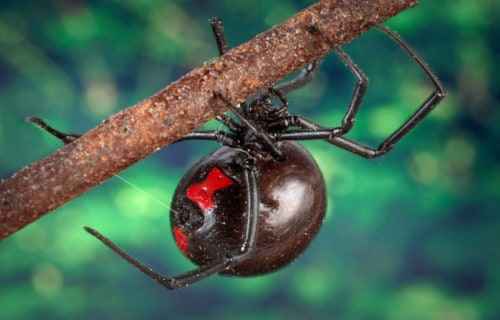
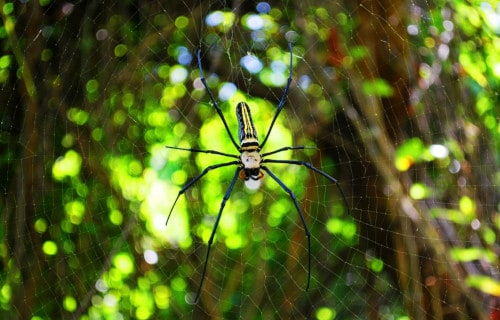
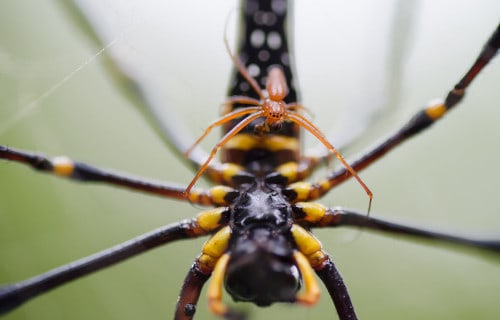
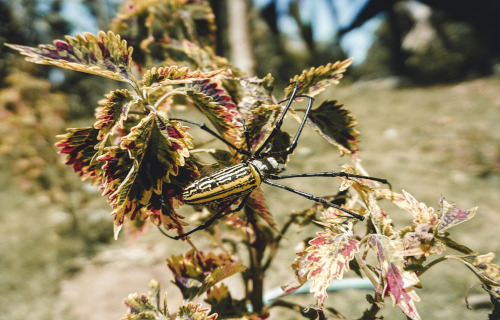
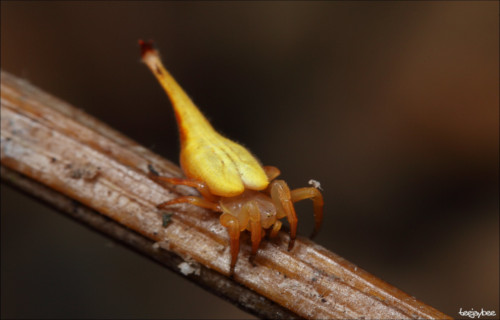
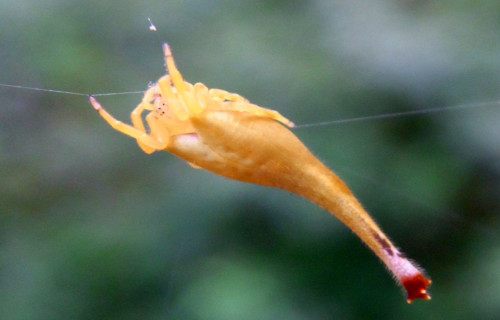
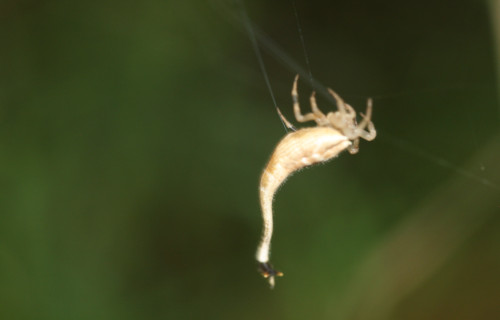
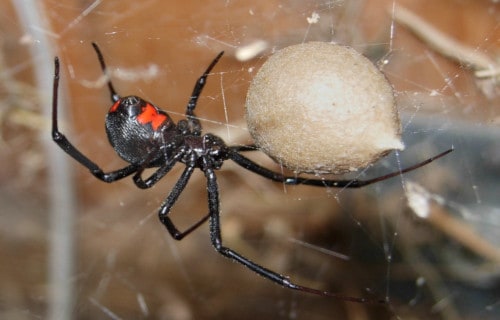
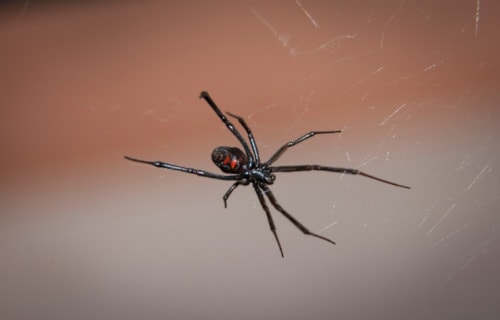

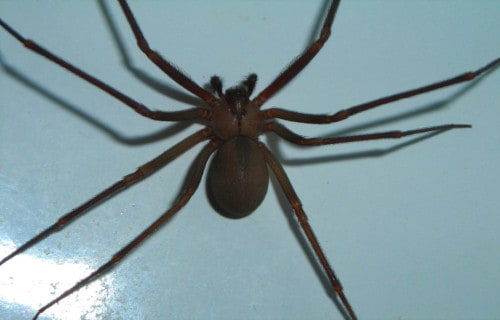
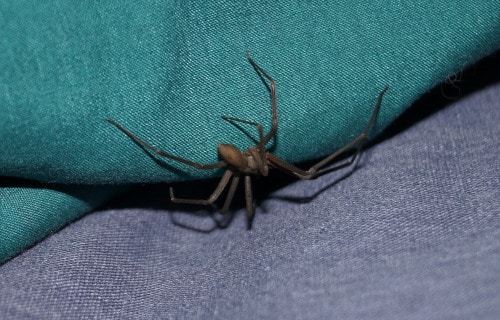
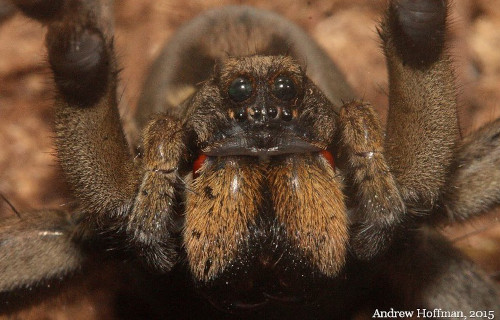
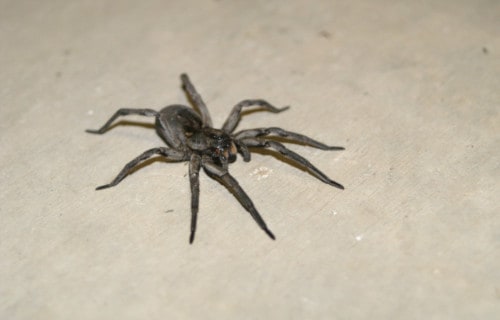
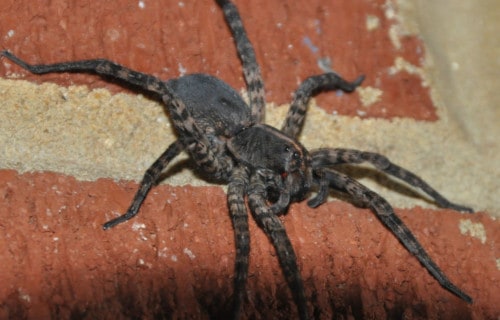
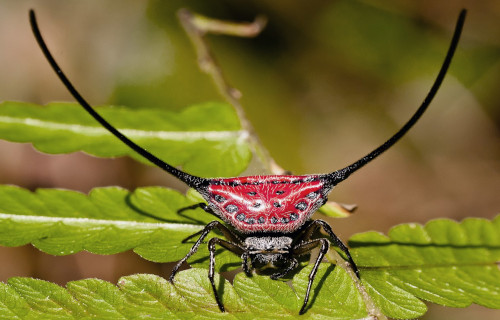
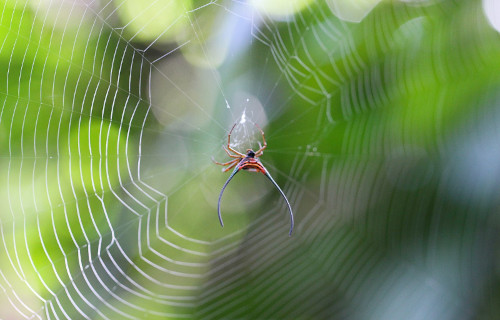
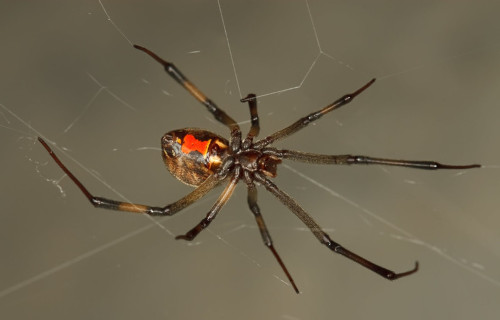
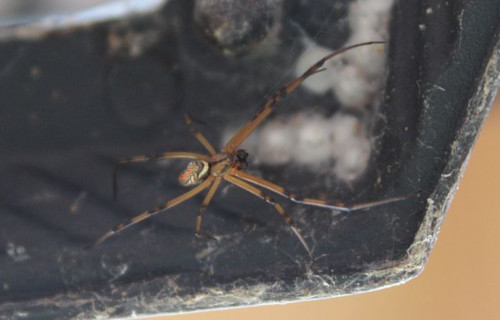
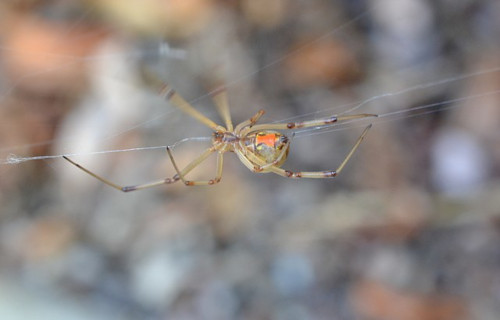









Leave a Reply